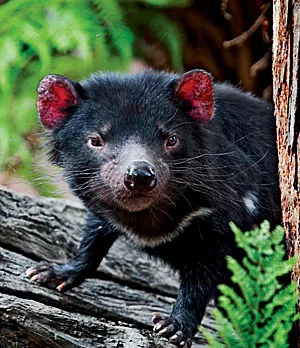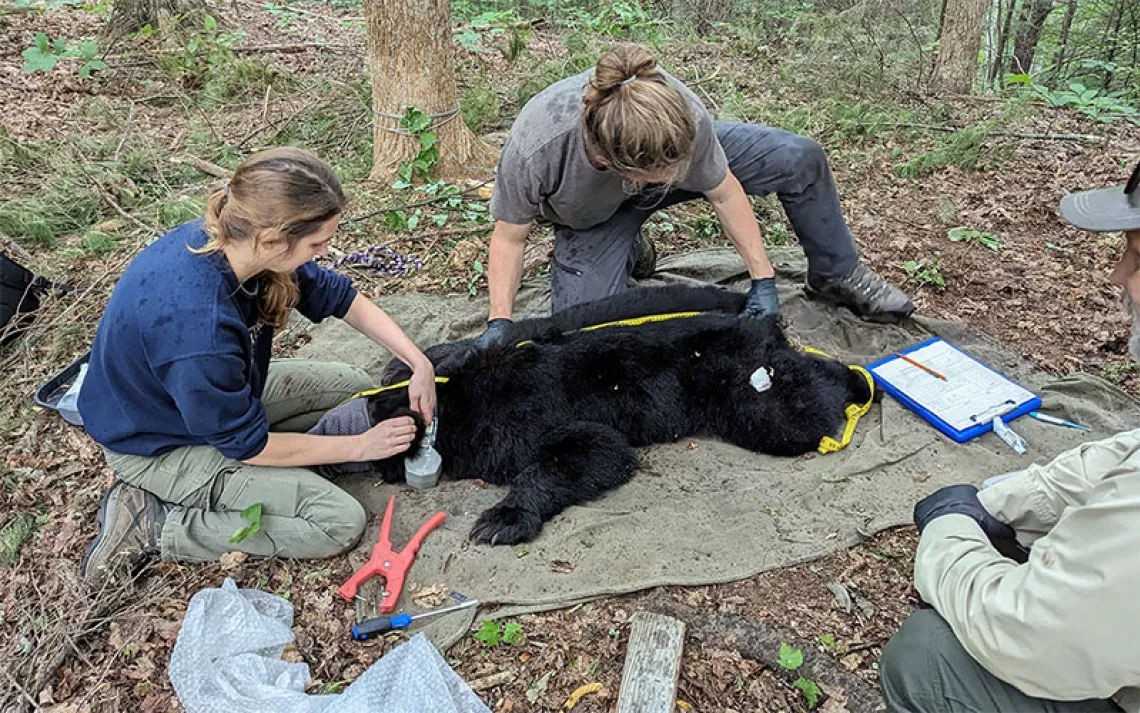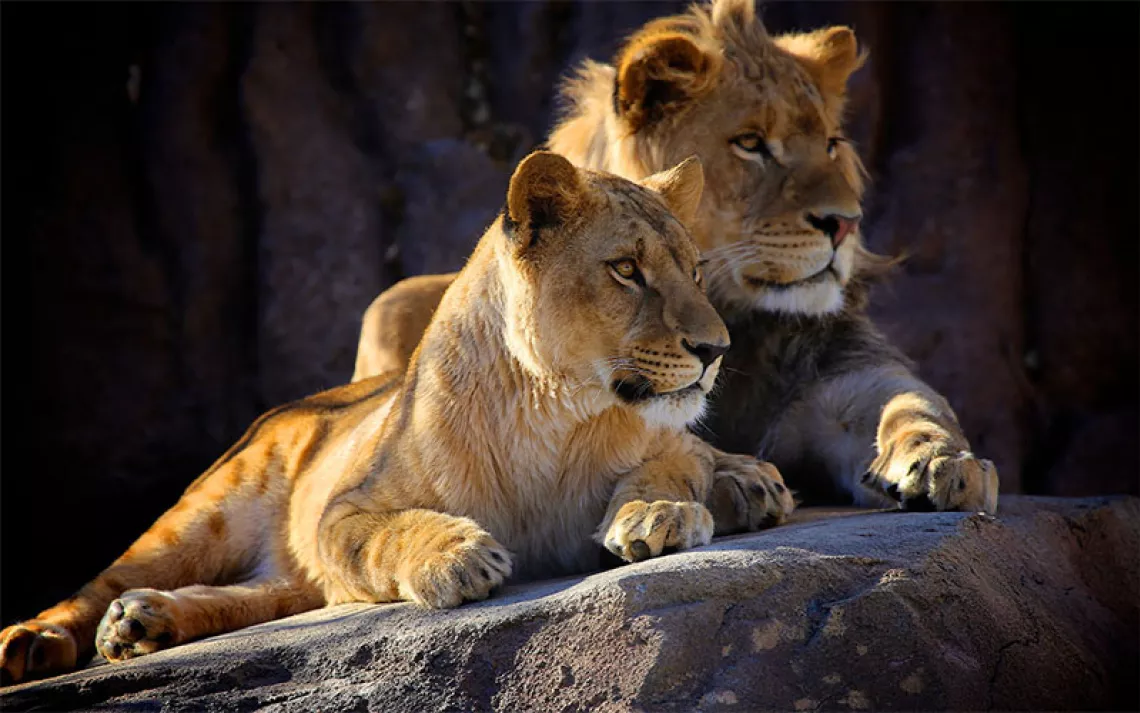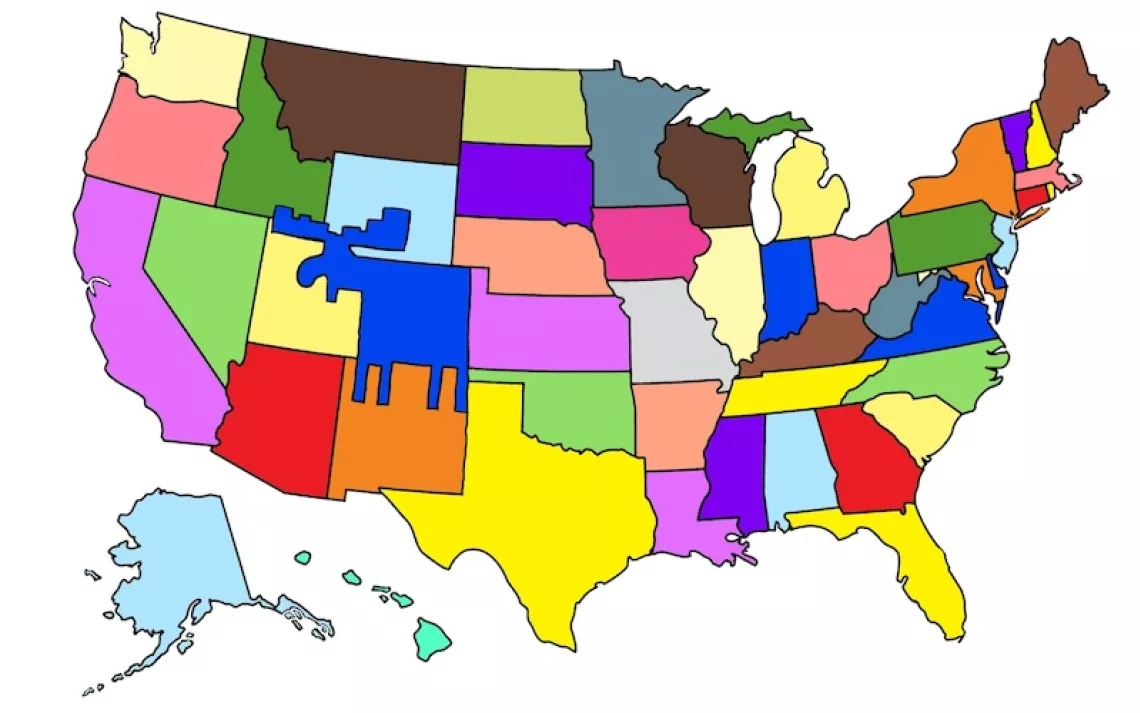Sympathy for the Tasmanian Devils
The Tasmanian devil is the largest carnivorous marsupial

When what is now Australia separated from ancient Antarctica in the Miocene era, it became a laboratory for something called convergent evolution. Its marsupial mammals filled many of the same ecological niches dominated elsewhere by the more familiar placental mammals: Wolves were echoed by the (now extinct) thylacine, marmots by the vombatiforms (wombats and koalas), and wolverines by the fierce Tasmanian devil, the largest carnivorous marsupial.
Devils were extirpated from Australia before European contact, probably by dingoes. They survived and thrived, however, in dingo-free Tasmania, only to be nearly eliminated by white settlers who thought them a danger to sheep. Protected since 1941, they now face a new threat: a bizarre infectious cancer called devil facial tumor disease. The sickness is spread when amorous or aggressive devils bite each other on the mouth; the resultant tumors eventually leave the animals unable to eat. As few as 2,000 devils may remain in the wild, and all that stands between them and extinction are a couple of disease-free Australian refuges. Once the disease dies with the last wild devil, these arks could give the species the rarest of gifts: a second chance.
 The Magazine of The Sierra Club
The Magazine of The Sierra Club






